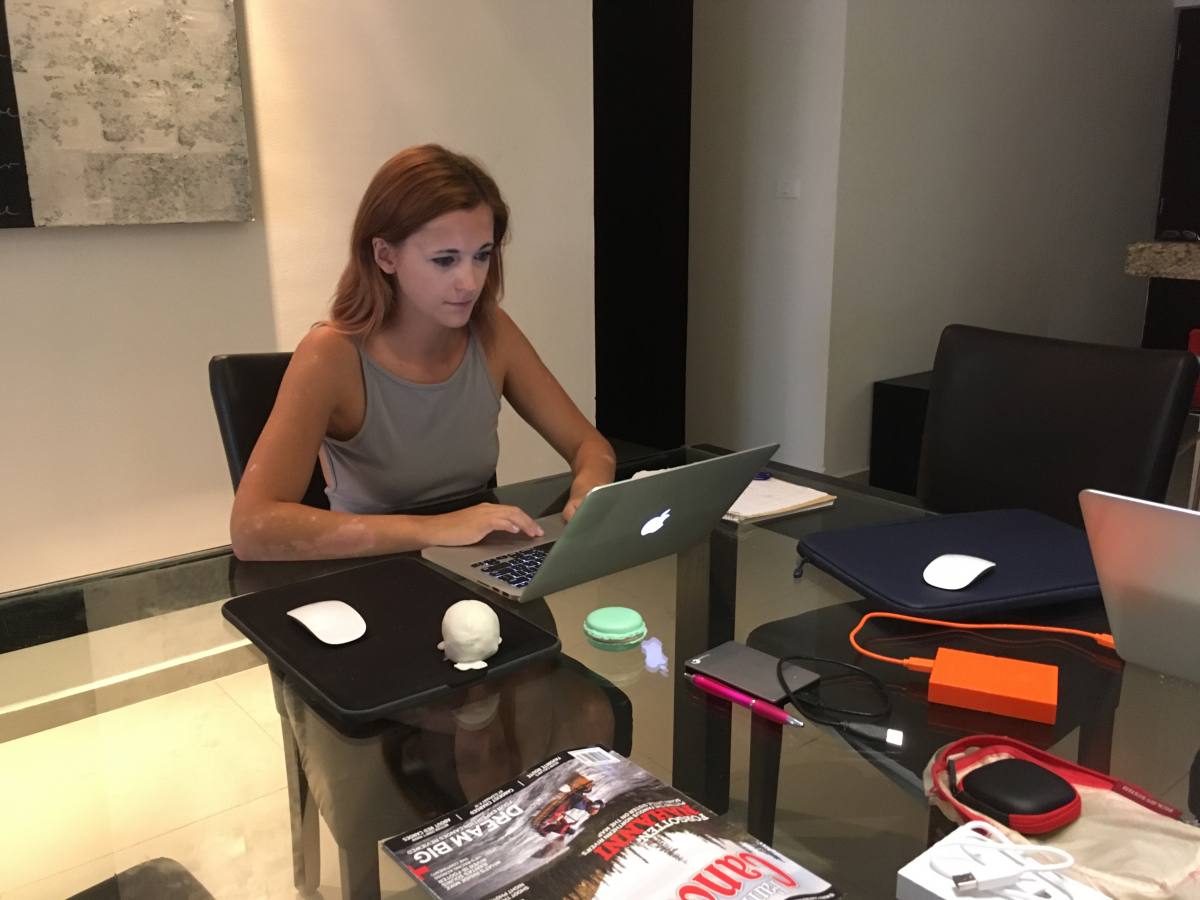Want to start a food blog but don’t know where to start? That’s how I felt for a long time!
Have you been wanting to start a blog for years, but always thought: it must be hard, the market is already saturated, I don’t have enough props for food photography, what if people don’t like my stuff, and so on? I get it!
Put these thoughts to the side and start your food blog today! Then you can worry about the rest as you go! You’ll thank me later.
Why you should trust me?
Why would you listen to a random person on the internet? I get it, you don’t know me.
Over the years I created successful blogs in different niches – travel, parenting and food.
Blogging IS my full-time job and I’ve been making mid-6 figures income from it (without relying on brand partnerships).
I also used to work for various SEO companies, and affiliate marketing companies as a full-time employee and consultant, so I do know what I’m talking about.
Why Do You Want to Become a Blogger?
Why do you want to blog is the most important question and you should answer – before you even start considering getting a website. After seeing all my pretty photos online which make me look like I’m not working at all. I know, a lot of you think that you want my job…
Blogging isn’t easy to start. It takes time to get it off the ground. I often worked for hours and hours without any break, but now I can also barely work for months and still have my income as it’s mostly passive income. Here’s my guide on how can you start a blog of any niche.
The first thing you need to realize is that it’s still NOT TOO LATE TO START your own blog. But, I’m going to be completely honest and say that with new google updates it’s not enough to just start “a blog” like for example “solo female adventure blog” or “vegetarian recipes”. It’s better to narrow to it down to one city or region, a specific style of traveling, certain interests like eg. house plants or backyard chickens, or mushroom recipes, and so on.
The smaller the niche the bigger the win these days (and faster growth).
The good news is that all my tips apply to different niches, so whether it’s a lifestyle blog, food blog, travel blog, or even something very niche like raising chickens or all about flooring, you’ll be good to start!
While there are many bloggers and influencers on the market, there is only a handful of them who are worth recommending and doing their job professionally. I personally saw some bloggers rising out of nowhere and beating the already established people in terms of traffic, audience engagement and beautiful photos. As long as you’re determined and willing to work hard, you could be the next blogging star!
How to Start a Blog (of any niche: food, travel, parenting, diy, and so on)?
- Create a Website
- Design the Blog
- Install Necessary Tools
- Create Content
Sounds simple, right? But, it’s not as simple as starting it and pumping out content. That’s how you burn out without making any income.
Starting a Website
Starting a website involves buying a domain (like this one AnnaintheHouse.com), but it also assumes that you’ve already thought about the name.
When you think of a name for your blog take into account that it must be easy to remember and that one can always assume from its name that it’s a blog of a specific niche you’re writing about.
It’s VERY important. This is how you’re going to be recognized, remembered and it cannot be changed later (or it will ruin your SEO).
Many bloggers are using their own full names for their blogs these days (eg. johnsmith.com), but I would advise against it. Why? Because you might change your name, you might want to sell your website years later or simply become more anonymous on the web. Always think about the future!
Few tips when choosing the name:
- Names as ‘Twenty-Something Travel” might sound great at first, but are you going to be in your twenties forever? Another example was ‘The Hungry Partier’ who realized that his name wasn’t getting him many sponsors and he eventually grew out of partying.
- Think internationally! I’d also avoid names that might not be clear to everyone. If you’re planning on writing in English your audience is going to be international, not just Australian or American. For instance, I know a blog called ‘Peanuts or Pretzels’. That name might be clear to Americans as it refers to a complimentary snack choice on major American airlines, but a lot of foreigners have no idea about it. When people ask what’s their blog name people usually respond ‘something with peanuts’, which probably isn’t how you want to be remembered and referred to.
- Be original! As great as Nomadic X, Adventurous X or Wandering X may sound at first, if you do a quick Google search you’ll realize that there are way too many blogs named like that. Your blog won’t stand out and as a result, you’ll have less chance to succeed in the industry. Same goes for ‘Blonde’, ‘Brunette’, “Ginger’ or other names referring to your hair color.
Once you have some potential names in mind for your blog, you’ll need to check their availability.
You can do that directly down here. Enter your desired domain name, hit “Check domain” and it’ll tell you if your domain name is available. Yes, you want to use .com.
If you find a domain that’s available, also make sure that social media handles (especially Instagram) aren’t taken already. You won’t know everything about social media straight away. I recommend you to follow me and some other travel bloggers on social media and see what we’re all doing on each of our channels in order to learn.
Once you’re sure of the name, you need to register it. If you’re starting out I recommend going with “>t, because it’s cheap and easy.
I have a separate post (click here) with detailed instructions on how to register. It’s not hard at all, everyone can do it – even if you don’t have any previous experience.
Full disclosure:
Bluehost is a perfect host to start with when you’re not sure where your blog will take you. I recommend it, because it’s cheap – just $2.95 per month.
My shop was actually hosted on Bluehost and I had absolutely no issues because traffic was moderate.
However, at some point once your traffic is higher, you’ll want to change hosts to get more direct support, better individual servers, and many other technical aspects you’ll learn about once you get into professional blogging more.
All my blogs are currently hosted on Agathon and I’ve been very happy with them for over a year now. I paid $80 per month (and that’s still on the cheap side for hosting). I tried other pro hosts like Kinsta before, but I thought the support I needed wasn’t worth the price.

Can I Start a Blog for Free?
Those of you who want to start a simple blog for friends and family can do it for free at WordPress.com. That’s how I started my first blog, but I honestly regret it as it required a lot of switching later.
WordPress.com doesn’t give you many options when it comes to design, selling adds and the most important thing it doesn’t allow you to attach Google Analytics account that will be important to track your visitors and send your stats to potential sponsors later and track keywords and other tools needed for SEO purposes.
Once your blog grows you’ll understand that the more visitors you have and the more collaborations you’ll get, the more money you’ll spend on the blog.
WordPress.ORG is often confused with wordpress.COM, but as similar, as they can look it’s a totally different thing. WordPress.ORG is a program that runs on self-hosting websites and you’ll need it on your website. The panel is the same as on a free wordpress.com with possibilities to add more widgets, plugins etc. Don’t feel overwhelmed by this – you’ll learn in the process. After you install WordPress you can log in to your website through the dashboard. Voila!
Designing Your Website
Once you’re all set with a domain and hosting, you need to move on to design and install a blog theme.
Look at other food blogs to get an idea of what you might want your blog to look like. Your theme should suit your aesthetic and offer the features you want.
There are free themes out there, but they’re basic and crappy. You need to invest a bit in a theme. Don’t overthink it though and worry about your theme too much, as you can change it many times during your blogging career.
My travel blog is running a Trellis theme by Mediavine to make things easier as I’m working with their ad network (more on this later).
My food blog was running a very popular Foodica Theme for a while without any issues. It’s a theme specifically designed for food bloggers with various functions.
Another great food theme I considered is Foodie Pro by Studiopress with built-in recipe templates and other cool features.
Note that just because the theme is designed for a food blog it doesn’t mean you cannot build a non-food blog on it. I know many people who use Foodica for a travel blog.
Other great themes I use are:
– Tramwell by Meks – a travel-oriented theme I decided to use for this blog.
– 17th Avenue Design – gorgeous themes that can be used for any niche.
Installing any of these themes is not rocket science – these days they all come with instructions, videos, and pointers.
If you’re too scared or too busy to install and set it all up yourself, you can hire a designer/developer on Upwork who can install everything on your blog quickly.

Installing Necessary Tools
Once you’re done with the design you need a few more things before you start working on your content.
You need to register and verify Google Analytics for your blog. Google Analytics helps you track blog traffic and is always required to join advertising networks and for potential sponsors.
Many plugins will automatically come with your theme, but there are several that I recommend you install.
Recommended WordPress plugins for food blogs:
- Akismet – Filters out spam comments without requiring CAPTCHA. A true must-have.
- Create by Mediavine – Alternative to Tasty Recipes for food bloggers. It’s easy to use and can create not just recipes, but also packing lists.
- Grow by Mediavine – Best plugin for social shares and SEO for Pinterest.
- Redirection – A very important plugin if you plan on changing URLs (it’s always the case) and all of us change URLs once in a while.
- Resize After Upload – You don’t want your images to be huge, because your website will take forever to load. You can set up dimensions of your images in this plugin.
- Yoast SEO – Easy plugin to improve your SEO. While it won’t make your articles rank high by itself, it’ll teach you some things about writing for SEO purposes.
Now that you have a blog, what’s next?!
It takes months to develop an audience and you should focus on getting noticed first. You can now start writing, starting from your ‘About’ page which will be the most viewed page of your blog so make it witty and engaging. Don’t give up if your blog won’t have that many visitors straight away.
I cannot teach you everything about blogging in a single post, as it would be as long as a book. But, blogging courses can do it better than me.
Making Sense of Cents – Why? Because you could definitely learn from someone who makes over $150,000 per month only from affiliates alone.
How to Get Noticed in the World of Bloggers?
You could think that with so many great travel blogs out there, you’ll never get noticed. You’re wrong. I’ve worked as a travel blogger and also with bloggers as a project manager matching influencers with clients, so I’ve experienced both perspectives.
- Pick the Right Niche:
Also, if you want people to recognize you, talk about you and recommend you, you need to stand out. ‘Travel & Stories’, or ‘Full-time Couple Travelers’ isn’t a niche.
These days even ‘solo female travel’ isn’t the ultimate niche, especially when everyone claims they’re an ‘adventure’ or ‘off the path’ blog, which isn’t always the case. You need to narrow it down even more.
It’s not enough to just sell all your stuff and move to Southeast Asia. There are too many others already doing that. It’s a cliche, so try to be original.
For my travel blog, for example, I narrowed down my own tagline to: Travel with Purpose – Chic Adventure Travel. Do you see what I mean by narrowing your niche now? Now my new readers know that I blog about adventure travel that’s chic (not backpacking), adventure (not just luxury spas without adventure aspects), and on top of that I want to tell people how to travel with a purpose – learn something on the way, either by studying abroad, learning about the history and languages, and interacting with local.
- Stay Consistent With Your Content:
Once you chose your focus, stick to it. If you’re a very budget blogger don’t suddenly go review luxury hotels (even if it’s sponsored) and vice versa. It will hurt your audience as if I started following you for budget travel tips and hostels I had a reason for it, I’m probably not going to be interested in a 5* hotel suggestions.
- Check Your Facts:
Most importantly, don’t write articles on things you really don’t know much about and be careful with wording. I’ve read way too many articles from bloggers who, for instance, came to my past home base Playa del Carmen in Mexico and wrote posts on best things to do and ‘ultimate guides’ to the spot.
Most of these articles suck. Why? Because spending 2 days, or even a week, in one country will not make you an authority.
What should you do instead? Stick to telling a good story, share your thoughts on a place, itinerary or simply post gorgeous photos. Don’t pretend you’re something you’re not – be yourself.
- Don’t Compare Yourself to Other Bloggers by Looking at Numbers:
No matter what your niche is, don’t be scared that some bloggers have more followers than you. Numbers aren’t everything, especially during times when they can be easily manipulated!
When brands or tourism boards look for bloggers to work with, they try to fit their audience and yours. If you don’t have a clear focus it’s hard for anyone to work with you, which means no sponsored deals.
This was actually one of the mistakes I had been making for a long time – focusing too much on the number of followers, without an actual focus on the blog content.
Many brands out there would rather have smaller bloggers with a clear audience working with them, than those with huge numbers, if they don’t fit the focus. Make sure that information is explicit on your website (either in your About Me or Work With Me page).
- Make Yourself Remembered
In order to build up your traffic, you need to do REALLY interesting stuff. Fun, sensational, meaningful, original. What do I mean by that? If I started my blog by writing ONLY about the best things to do in Paris, Thai beaches, or living in Chiang Mai, it would not set me apart from hundreds of other bloggers. Almost every blogger has written about these popular things.
These articles aren’t wrong. In the end, people do want to know about these popular travel spots and they do well in Google search. But, it’s also important to cover destinations and ideas that aren’t covered by many out there.
Write some thoughtful pieces. I’ve never met anyone coming to me and saying: I really liked your best things to do in X article, but they remembered my long pieces such as this one or that one.
You can get popular by doing something original or/and funny. Good examples are: Janet’s flying GoPro story, Derek Entering US Border with a Bullet, or Matt’s stolen computer story.
- Network & Ask for Advice
Networking is another important key to success. Too many bloggers see other travel bloggers as competition. While it has some truth to it (you’ll learn more about it when you start networking), it doesn’t change the fact that that they can also be helpful colleagues.
You obviously won’t be bonding with every blogger out there – like in normal life, not everyone likes one another. You’ll build your own network of people you get along with. This means you may want to interact with them on social media, via email, or attend conferences.

Learn More as You Go…
You shouldn’t worry about SEO when you start your blog, but you can start thinking about it already. SEO stands for Search Engine Optimization and it basically refers to being easily found on in the google search. There are many ways to improve your SEO, but it’s a topic for another article.
If you want to learn how to improve your traffic you should check out this e-book. While I haven’t written it myself, it nicely explained everything.
Reach out to other bloggers in your niche and online magazines and ask to write a guest post or take part in collaborative articles on other blogs.






This guide on starting a profitable blog is a gem! It provides practical tips and strategies to turn blogging into a successful venture. Thank you for sharing this. It is really helpful for me.